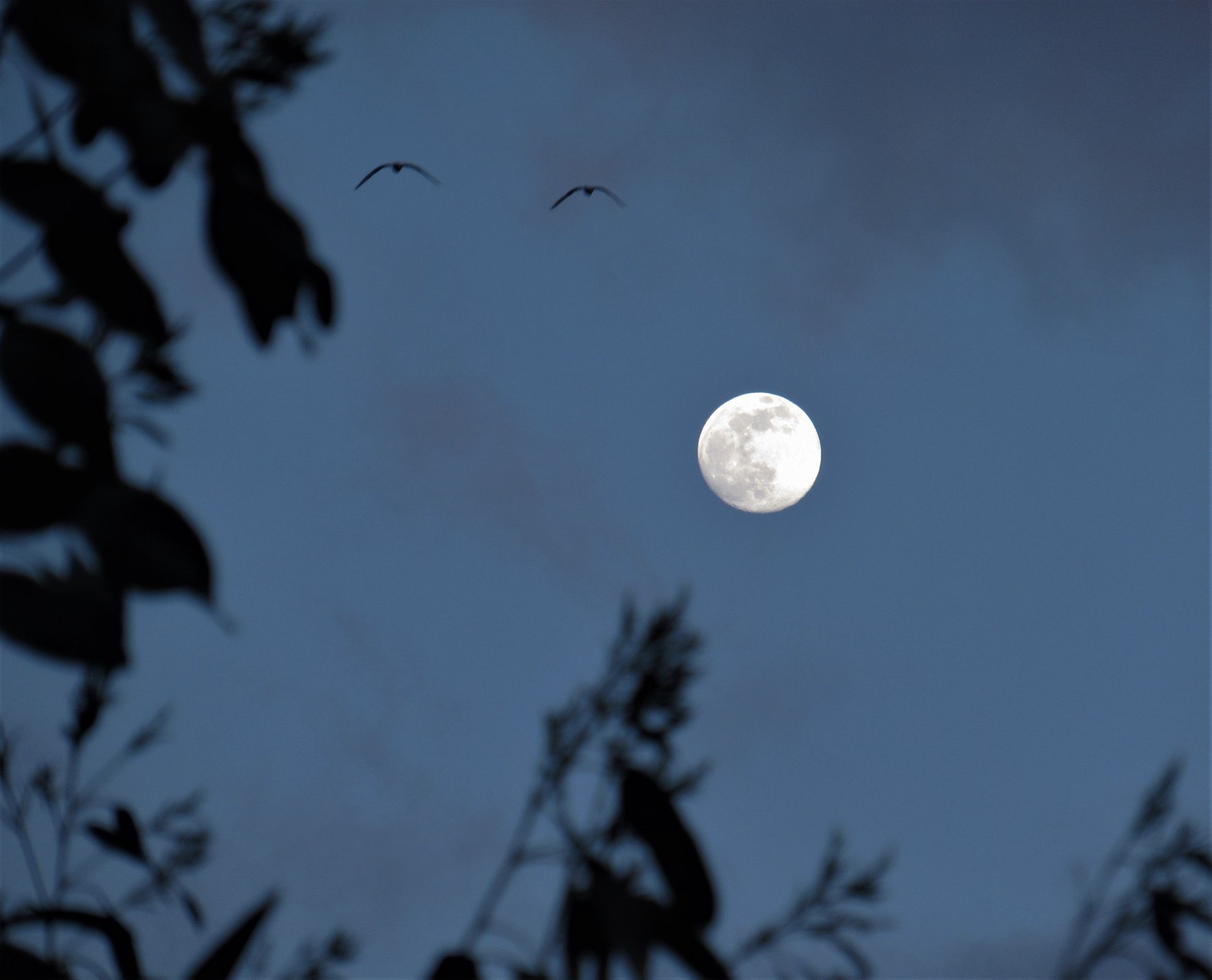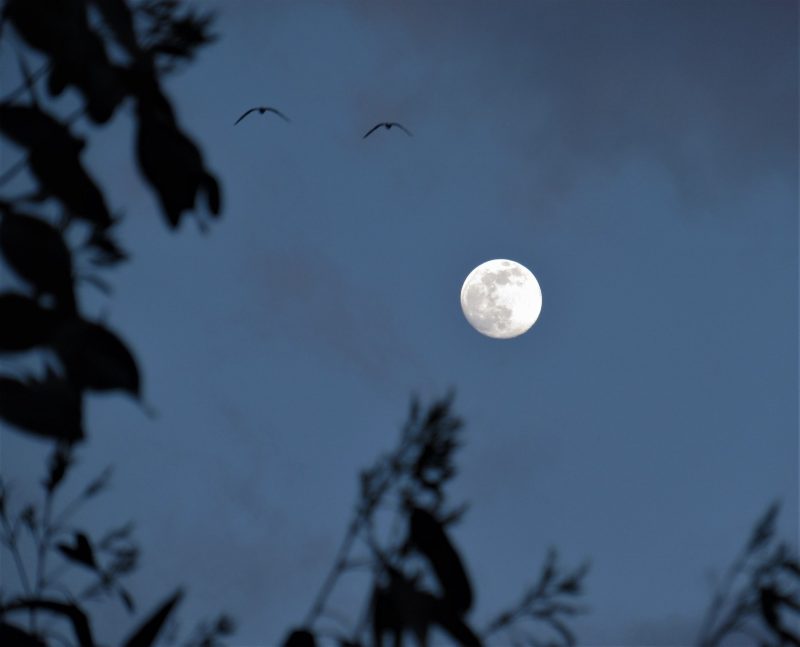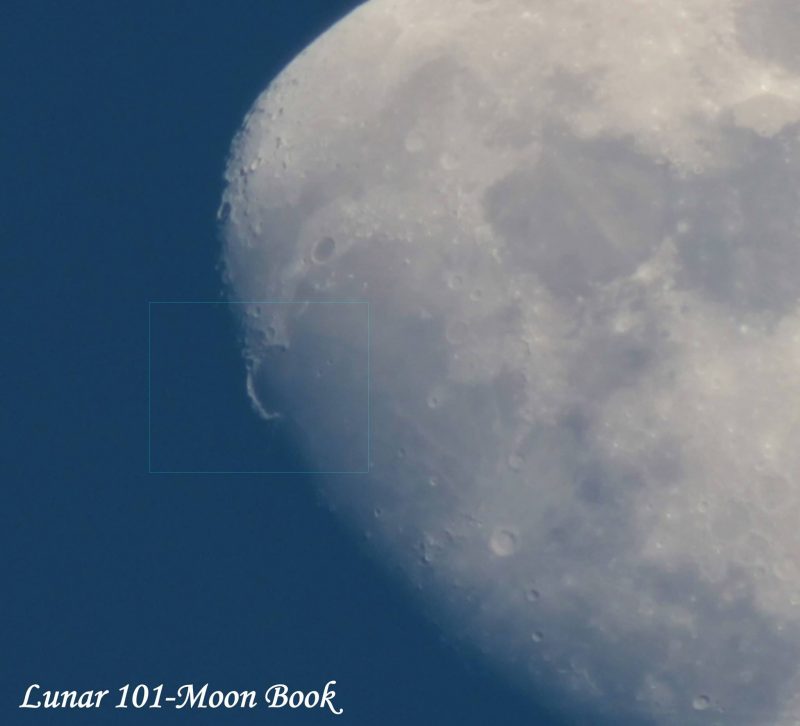

View at EarthSky Community Photos. | Deirdre Horan in Dublin, Ireland caught the waxing gibbous moon on April 6, 2020. Thank you, Deirdre!
You’ll see a waxing gibbous moon between a first quarter moon and full moon. The word gibbous comes from a root word that means hump-backed.
People often see a waxing gibbous moon in the afternoon, shortly after moonrise, while it’s ascending in the east as the sun is descending in the west. It’s easy to see a waxing gibbous moon in the daytime because, at this phase of the moon, a respectably large fraction of the moon’s dayside faces our way.

Point of interest on a waxing gibbous moon: Sinus Iridum (Bay of Rainbows) surrounded by the Jura Mountains. Photo via Lunar 101-Moon Book in Toronto, Canada.

Prabhakaran A captured this image on a waxing gibbous moon on November 16, 2018. He wrote: “Three types of land forms make up the moon’s surface: impact craters, maria, highlands. The image above depicts the large crater Plato, whose interior of the crater has smoothed over from old lava flows. A portion of Mare Imbrium – another lava feature – is visible at the right bottom. The lunar surface features many mountains, such as Montes Alpes, which frequently border the maria or seas. Comparing the diameters of the Earth and moon, the lunar mountains are proportionally higher. Mons Pico is an isolated mountain with a height of 2,400 meters [7,900 feet]. It creates an enormous shadow in this picture which shows its height.”
As the moon orbits Earth, it changes phase in an orderly way. Follow these links to understand the various phases of the moon.
New moon
Waxing crescent moon
First quarter moon
Waxing gibbous moon
Full moon
Waning gibbous moon
Last quarter moon
Waning crescent moon
Read more: 4 keys to understanding moon phases
Bottom line: A waxing gibbous moon comes between first quarter moon and full moon. It appears more than half illuminated, but less than full.
Check out EarthSky’s guide to the bright planets.
Help EarthSky keep going! Please donate.
Source:
https://earthsky.org/moon-phases/waxing-gibbous